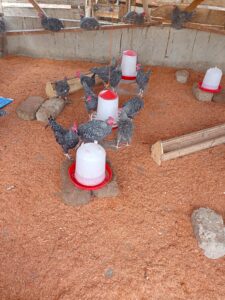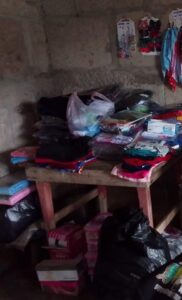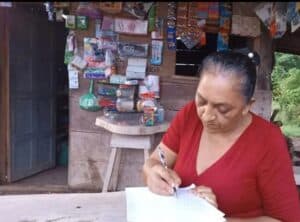
How Self-Help is Changing Lives of Nicaraguan Farmers Through Education & Conversation
By Jorge Campos, Nicaragua Country Director

Jorge training Nicaraguan farmers.
Faced with the challenge of feeding the poorest families in southeastern Nicaragua, our organization, Self-Help International, is providing technical resources to farmers. Our mission is to teach Nicaraguan farmers how to improve their corn production. Our goal is to improve corn production and increase yields to more than 100 quintals per manzana (approximately 100 bushels per acre) compared to the national average of 21 quintals per manzana (1 manzana of land is about 0.75 acres). To aid in that goal, we promote the use of INTA-Nutrader seed corn, a variety of high quality protein maize (QPM) that contains more than 90% of the quality protein found in a glass of cow’s milk.
Each family that grows the INTA-Nutrader corn variety is hoping to better feed their family, and also ensure an adequate supply of food and subsistence for themselves. In rural mountain areas, these small farmers do not have credit, they do not receive government support, and they do not receive technical assistance; but, for more than ten years, they have been able to obtain certified seed from Self-Help.
We have challenged ourselves to teach farmers to utilize the INTA-Nutrader variety and to employ the double-row maize method to produce more than 100 quintals of commercial corn per manzana. We are constantly teaching and holding discussions with farmers about the best practices they can use to improve their yields and grow more nutritious food.
Among the topics that we have discussed with corn producers are:
- The limiting factors of corn production as practiced by these farmers, including the “cost-benefit” analysis of key inputs, local marketing channels, benefits of storage and grain quality preservation.
- The “100% performance keys”: 30% correspond to the genetic pull of the INTA-Nutrader variety; 30% to the agronomic management that the farmer performs (observation and control of pests, diseases, nutrient deficiencies and other relevant aspects in the development of the corn plants during the first 45 days of crop development); another 30% to the nutrition plan, including chemical fertilizers (correct dosage, source, application time, and form of application); and 10% to the climatic events that intervene throughout the growing season, such as droughts and floods, rains and storms, etc., so that the farmers can improve their production technology and increase their yields.
- The strong promotion of “double-row methodology” that involves experimenting with a new planting design, including populations of about 125 thousand seeds per hectare, or 96 thousand seeds per manzana. The greater the number of plants, the greater the number of ears, and therefore the higher the yield.

Farmers evaluating the double row method.
- Addressing the physiological aspects of corn growth to obtain higher yields. We meet the needs of the corn plant in each one of the stages of development. The first 45 days are key. During the stage of development of the first 8 to 12 leaves, the yield is determined. The most important leaves for filling out the ears are the 2 lower leaves and the 3 upper leaves.
I have seen the differences that these conversations and educational programs have made in our communities. We’ve not only been able to feed people better, we’ve been able to feed them more. As each season comes to an end and another begins, the yields are improving and so is life here in Nicaragua.

 Previous Post
Previous Post Next Post
Next Post


